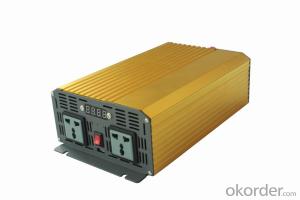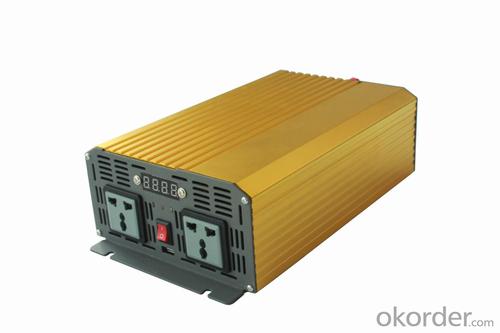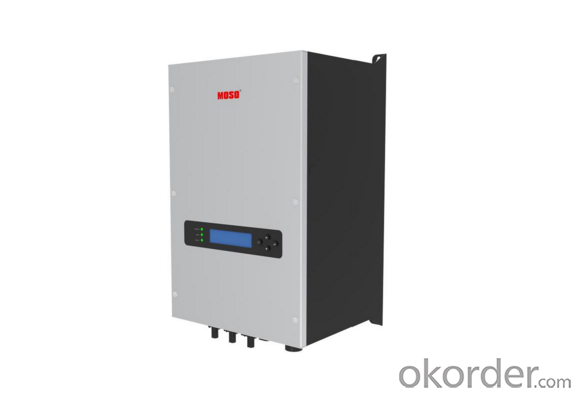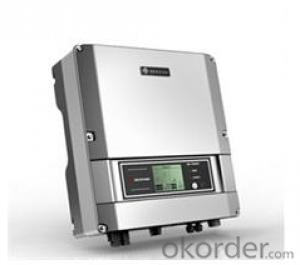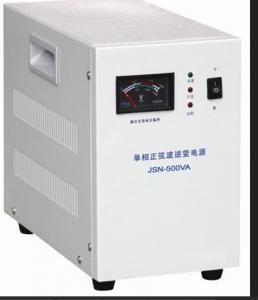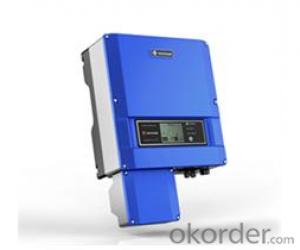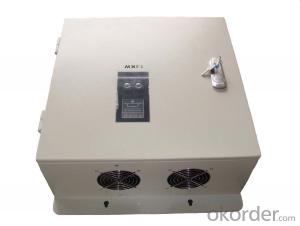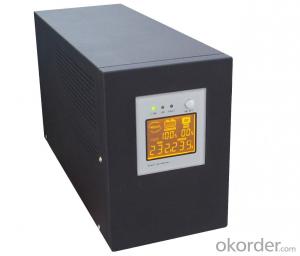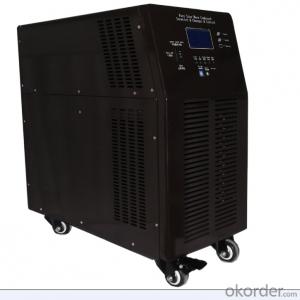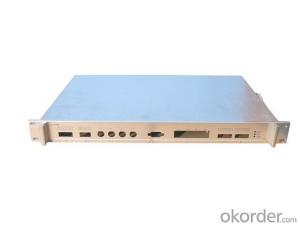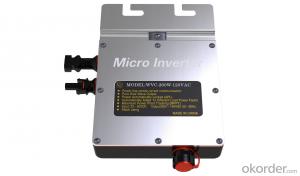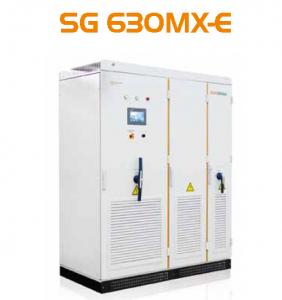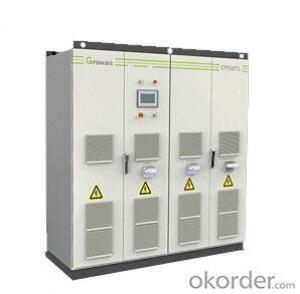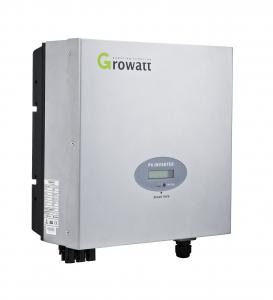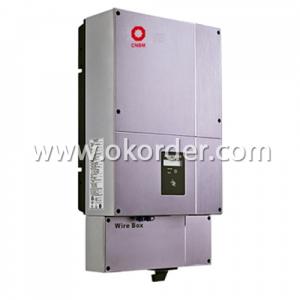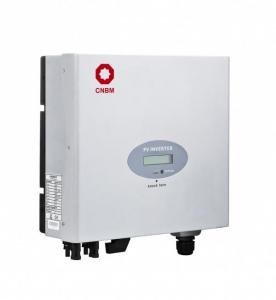Quiet Solar Inverter - Single Phase Inverter Solar Inverter Made in China
- Loading Port:
- Shanghai
- Payment Terms:
- TT OR LC
- Min Order Qty:
- 0 watt
- Supply Capability:
- 10000 watt/month
OKorder Service Pledge
OKorder Financial Service
You Might Also Like
Description of Single Phase Inverter
Solar ac power system consists of solar panels, charge controllers, inverter and battery; Solar energy does not include inverter dc power system. Inverter is a kind of power conversion device, inverter by incentives can be divided into self-excited oscillation inverter and separately excited oscillation inverter.
Features of Single Phase Inverter
High MPPT accuracy(>99.9%)
Wide DC input range (60~300 Vdc), compatible with different module
Easy to wire, install and operate
IP65 design, suitable for indoor and outdoor installation
10 years warranty(5~25 years optional)
New high frequency design Higher power quality
Casting shell design Beautiful and convenient installation
Technical Data of Single Phase Inverter
| Type | Omniksol-1.5k-TL2-M |
| Input(DC) | |
| Max.PV Power | 1.75kW |
| Max,DC Voltage | 500V |
| Operating MPPT Voltage Range | 60-450V |
| MPPT Voltage Range at Nominal Power | 125-300V |
| Start up DC Voltage | 70V |
| Turn off DC Voltage | 50V |
| Max, DC Current | 11A |
| Max, Short Cicuit Current for each MPPT | 14A |
| Number of MPP trackers | 1 |
| Number of DC Connection for each MPPT | 1 |
| DC Connection Type | MC4 connector |
| Output(AC) | |
| Max,AC Apparent Power | 1500VA |
| Nominal AC Power (cos phi = 1) | 1500W |
| Nominal Grid Voltage | 220V/230V/240V |
| Nominal Grid Frequency | 50Hz/60Hz |
| Max, AC Current | 7.5A |
| Grid Voltage Range** | 185-276V |
| Grid Frequency Range** | 45-55Hz/55-65Hz |
| Power Factor | >0.99 |
| Total Harmonic Distortion(THD) | <3% |
| Feed in Starting Power | 30W |
| Night time Power Consumption | <1W |
| Standby Consumption | 6W |
| AC Connection Type | Plug-in connertor |
| Efficiency | |
| Max,Efficiency | 96.5% |
| Euro Efficiency | 96.0% |
| MPPT Efficiency | 99.9% |
| Safety and Protection | |
| DC Insulation Monitoring | Yes |
| DC Switch | Optional |
| Residual Current Monitoring Unit (RCMU) | Integrated |
| Grid Monitoring with Anti-islanding | Yes |
| Protection Class | Ⅰ(According to IEC 62103) |
| Overvoltage Category | PV Ⅱ/ Mains Ⅲ(According to IEC 62109-1) |
| Reference Standard | |
| Safety Standard | EN 62109, AS/NZS 3100 |
| EMC Standard | EN 6100-6-1, EN 6100-6-2, EN 6100-6-3 EN 6100-6-4, EN 6100-3-2, EN 6100-3-3 |
| Grid Standard | VDE-AR-N4105. VDE-0126-1-1,G83/1,EN 50438,RD1699,CEI 0-21, AS4777,C10/C11 |
| Physical Structure | |
| Dimensions | 210x290x90mm |
| Weight | 5kg |
| Environmental Protection Rating | IP 65 (According to IEC 60529) |
| Cooling Concept | Natural convection |
| Mounting Information | Wall bracket |
| General Data | |
| Operating Temperature Range | -25℃ to +60℃(derating above 45℃) |
| Relative Humidity | 0% to 98%, no condensation |
| Max. Altitude (above sea level) | 2000m |
| Noise Type | <45dB |
| Isolation Type | Transformerless |
| Display | 2LED Backlight 16*2 Character LCD |
| Data Communication | RS485(WiFi, GRPS optional) |
| Computer Communication | RS232 as option |
| Standard Warranty | 10 Years (5-25 years optional) |
IMages of Single Phase Inverter

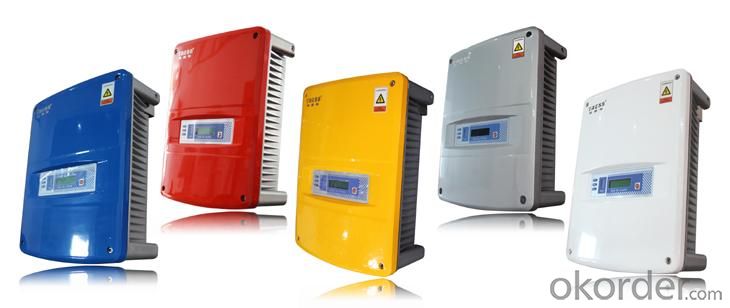

FAQ
Q: Do you have the CE, TUV, UL Certification?
A: We’ve already passed all the tests, and any certificate is available.
Q: Have you ever sold your products to companies in my country?
A: Of course, we have customers in all general PV markets, but I think we should expand our market share along with the market growth.
Q: When did your company set up? You are a new company, how can I believe your quality?
A: We entered into Solar PV industry in 2005, now we have several plants in manufacturing of a-Si and c-Si panels, and our capacity is 220MW per year. Till now we have already passed all the tests by authorized laboratories, e.g. TUV, CE, UL.
Q: Can you help us install the module if we cooperate with you?
A: We haven’t entered into installation sector, but we have the plan in near future.
Q: How do you pack your products?
A: We have rich experience on how to pack the panels to make sure the safety on shipment when it arrives at the destination.
Q: Can you do OEM for us?
A: Yes, we can.
Q: Can we visit your factory?
A: Surely, I will arrange the trip basing on your business schedule.
- Q: Can a solar inverter be used with a solar-powered irrigation system?
- Yes, a solar inverter can be used with a solar-powered irrigation system. The solar inverter is responsible for converting the DC power generated by the solar panels into AC power, which can then be utilized to power the irrigation system. This allows for efficient and sustainable water distribution in agricultural fields through the use of solar energy.
- Q: Are there any noise or sound considerations with a solar inverter?
- Yes, there are noise considerations with a solar inverter. While solar inverters generally produce low levels of noise, there can be some audible humming or buzzing sound generated during their operation. The noise level can vary depending on the type and model of the inverter. However, modern inverters are designed to minimize noise and are generally considered to be quiet during normal operation.
- Q: How do you choose the right size solar inverter for a specific solar power system?
- To ensure optimal performance and efficiency of your solar power system, careful consideration of various factors is necessary when selecting the appropriate size solar inverter. Follow these steps to make the right choice: 1. Calculate your solar power system's total capacity: Begin by determining the combined wattage of all your solar panels. This information can typically be found in the product specifications or obtained from your solar panel manufacturer. 2. Evaluate your average energy consumption: Assess your typical energy consumption to determine the size of the solar inverter required to meet your needs. Take into account peak power usage and potential future increases in energy demands. 3. Match the inverter's capacity with your system's: Ensure that the solar inverter's capacity is equal to or slightly higher than your system's total capacity to achieve optimal performance. 4. Consider the inverter's efficiency: Seek out an inverter with high efficiency ratings. A higher efficiency rating means it can convert a larger percentage of solar energy into usable electricity, minimizing power losses. 5. Select the appropriate inverter type: Decide which type of solar inverter is suitable for your system. The three main types are string inverters, microinverters, and power optimizers. String inverters are the most common and cost-effective choice for small to medium-sized systems, while microinverters and power optimizers are better suited for complex installations or systems with shading issues. 6. Assess additional features: Take into account any additional features offered by the solar inverter. Look for features like monitoring capabilities, grid integration capabilities, and built-in safety features such as arc fault protection or rapid shutdown. 7. Seek professional advice: If you are uncertain about selecting the right size solar inverter for your specific solar power system, consulting a professional solar installer or electrical engineer is advisable. They can help assess your energy needs, system requirements, and provide expert guidance in choosing the appropriate inverter size. Remember, making an informed decision when choosing the right size solar inverter is crucial for your system's overall performance and efficiency. Take the time to evaluate your system's requirements and seek expert advice to ensure the best outcome.
- Q: After the PV inverter, how to achieve the same period before the network?
- Grid simulator: analog power grid, normal and abnormal conditions, overvoltage, undervoltage, over frequency, under frequency, sudden power failure, etc.
- Q: Can a solar inverter be used with dual-axis solar trackers?
- Yes, a solar inverter can be used with dual-axis solar trackers. A solar inverter is responsible for converting the direct current (DC) generated by the solar panels into alternating current (AC) that can be used to power electrical devices or be fed into the grid. The dual-axis solar trackers enable the solar panels to follow the sun's movement in both horizontal and vertical directions, maximizing their exposure to sunlight throughout the day. The solar inverter can still perform its function of converting DC to AC regardless of the type of solar tracking system used.
- Q: How does a solar inverter handle frequency variations in the grid?
- A solar inverter handles frequency variations in the grid through its built-in control mechanisms. It continuously monitors the frequency of the grid and adjusts its own output accordingly to match the grid frequency. This ensures that the solar inverter remains synchronized with the grid and allows for seamless power transfer between the two.
- Q: Photovoltaic grid-connected inverter problem
- The first zero line is the AC output. Any AC output of the inverter will have zero line, whether it is isolated or non-isolated. Isolation is the safety of high voltage inverters and regulators. 50KW above the inverter almost with the transformer.
- Q: How does a solar inverter handle voltage fluctuations in the grid?
- A solar inverter handles voltage fluctuations in the grid by continuously monitoring the grid voltage. When the voltage exceeds or drops below the acceptable range, the inverter adjusts the power output of the solar panels accordingly. It stabilizes the voltage by regulating the flow of electricity from the solar panels, ensuring a consistent and safe supply of power to the grid.
- Q: Can a solar inverter be used in conjunction with a power optimizer?
- Yes, a solar inverter can be used in conjunction with a power optimizer. In fact, this combination is commonly used in solar power systems. The power optimizer helps to maximize the energy output of each individual solar panel by optimizing the power at the panel level, while the solar inverter converts the DC power generated by the panels into usable AC power for the electrical grid. This combination allows for better performance, increased efficiency, and more flexibility in system design.
- Q: Are there any specific installation requirements for solar inverters?
- Yes, there are specific installation requirements for solar inverters. They need to be installed in a well-ventilated area, away from direct sunlight and extreme temperatures. Additionally, they should be mounted securely on a wall or a rack, with proper clearance for maintenance and airflow. The installation should follow electrical safety guidelines and be performed by a qualified professional.
Send your message to us
Quiet Solar Inverter - Single Phase Inverter Solar Inverter Made in China
- Loading Port:
- Shanghai
- Payment Terms:
- TT OR LC
- Min Order Qty:
- 0 watt
- Supply Capability:
- 10000 watt/month
OKorder Service Pledge
OKorder Financial Service
Similar products
Hot products
Hot Searches
Related keywords
